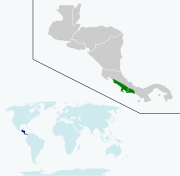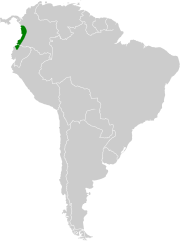Superregnum: Eukaryota
Cladus: Unikonta
Cladus: Opisthokonta
Cladus: Holozoa
Regnum: Animalia
Subregnum: Eumetazoa
Cladus: Bilateria
Cladus: Nephrozoa
Superphylum: Deuterostomia
Phylum: Chordata
Subphylum: Vertebrata
Infraphylum: Gnathostomata
Megaclassis: Osteichthyes
Cladus: Sarcopterygii
Cladus: Rhipidistia
Cladus: Tetrapodomorpha
Cladus: Eotetrapodiformes
Cladus: Elpistostegalia
Superclassis: Tetrapoda
Cladus: Reptiliomorpha
Cladus: Amniota
Classis: Reptilia
Cladus: Eureptilia
Cladus: Romeriida
Subclassis: Diapsida
Cladus: Sauria
Infraclassis: Archosauromorpha
Cladus: Crurotarsi
Divisio: Archosauria
Cladus: Avemetatarsalia
Cladus: Ornithodira
Subtaxon: Dinosauromorpha
Cladus: Dinosauriformes
Cladus: Dracohors
Cladus: Dinosauria
Cladus: Saurischia
Cladus: Eusaurischia
Subordo: Theropoda
Cladus: Neotheropoda
Cladus: Averostra
Cladus: Tetanurae
Cladus: Avetheropoda
Cladus: Coelurosauria
Cladus: Tyrannoraptora
Cladus: Maniraptoromorpha
Cladus: Maniraptoriformes
Cladus: Maniraptora
Cladus: Pennaraptora
Cladus: Paraves
Cladus: Eumaniraptora
Cladus: Avialae
Infraclassis: Aves
Cladus: Avebrevicauda
Cladus: Pygostylia
Cladus: Ornithothoraces
Cladus: Ornithuromorpha
Cladus: Carinatae
Parvclassis: Neornithes
Cohors: Neognathae
Cladus: Neoaves
Superordo: Caprimulgimorphae
Ordo: Apodiformes
Familia: Trochilidae
Subfamilia: Trochilinae
Genus: Polyerata
Species: P. amabilis – P. decora – P. rosenbergi
Name
Polyerata Heine, 1863
Typus: Trochilus amabilis Gould, 1853 = Polyerata amabilis
References
Primary references
Heine, Sr., F. 1863. Trochilidica. Journal für Ornithologie 11(63): 173–217 DOI: 10.1007/bf02004901 BHLReference page. p. 194
Additional references
Schuchmann, K-L. 1999. Family Trochilidae (hummingbirds). Pp. 468-680 in Handbook of the Birds of the World, Vol. 5. Barn-owls to hummingbirds. (J. del Hoyo et al., eds.). Lynx Edicions, Barcelona. AbstractReference page.
McGuire, J.A., Witt, C.C., Altshuler, D.L. & Remsen, Jr., J.V. 2007. Phylogenetic systematics and biogeography of hummingbirds: Bayesian and Maximum Likelihood analyses of partitioned data and selection of an appropriate partitioning strategy. Systematic Biology 56(5):837–856. DOI: 10.1080/10635150701656360 Open accessReference page.
McGuire, J.A., Witt, C.C., Remsen, Jr., J.V., Dudley, R. & Altshuler, D.L. 2008. A higher-level taxonomy for hummingbirds. Journal of Ornithology 150:155–165. DOI: 10.1007/s10336-008-0330-x Full article (PDF)Reference page.
McGuire, J.A., Witt, C.C., Remsen, Jr., J.V., Corl, A., Rabosky, D.L., Altshuler, D.L. & Dudley, R. 2014. Molecular phylogenetics and the diversification of Hummingbirds. Current Biology 24: 910–916. DOI: 10.1016/j.cub.2014.03.016 Open access ErratumReference page.
Stiles, F.G., Piacentini, V.Q. & Remsen, Jr., J.V. 2017. A brief history of the generic classification of the Trochilini (Aves: Trochilidae): the chaos of the past and problems to be resolved. Zootaxa 4269(3): 396–412. DOI: 10.11646/zootaxa.4269.3.4 PDF.Reference page.
Polyerata is a genus of hummingbirds.
Species
The genus contains three species:[1]
| Common name | Scientific name and subspecies | Range | Size and ecology | IUCN status and estimated population |
|---|---|---|---|---|
| Blue-chested hummingbird
|
Polyerata amabilis (Gould, 1853) |
Colombia, Costa Rica, Ecuador, Nicaragua, and Panama |
Size: Habitat: Diet: |
LC
|
| Charming hummingbird
|
Polyerata decora Salvin, 1891 |
Costa Rica and Panama. |
Size: Habitat: Diet: |
LC
|
| Purple-chested hummingbird
|
Polyerata rosenbergi Boucard, 1895 |
Colombia and Ecuador. |
Size: Habitat: Diet: |
LC
|
These species were formerly placed in the genus Amazilia. A molecular phylogenetic study published in 2014 found that Amazilia was polyphyletic.[2] In the revised classification to create monophyletic genera, these three species were moved to the resurrected genus Polyerata that had been introduced in 1863 by the German ornithologist Ferdinand Heine to accommodate the blue-chested hummingbird which therefore becomes the type species.[1][3][4] The genus name is from Ancient Greek poluēratos meaning "very lovely".[5]
References
Gill, Frank; Donsker, David; Rasmussen, Pamela, eds. (July 2020). "Hummingbirds". IOC World Bird List Version 10.2. International Ornithologists' Union. Retrieved 7 January 2020.
McGuire, J.; Witt, C.; Remsen, J.V.; Corl, A.; Rabosky, D.; Altshuler, D.; Dudley, R. (2014). "Molecular phylogenetics and the diversification of hummingbirds". Current Biology. 24 (8): 910–916. doi:10.1016/j.cub.2014.03.016. PMID 24704078.
Stiles, F.G.; Remsen, J.V. Jr.; Mcguire, J.A. (2017). "The generic classification of the Trochilini (Aves: Trochilidae): reconciling taxonomy with phylogeny". Zootaxa. 4353 (3): 401–424. doi:10.11646/zootaxa.4353.3. PMID 29245495.
Heine, Ferdinand (1863). "Trochilidica". Journal für Ornithologie (in German). 11 (3): 173–217 [194]. doi:10.1007/BF02004901.
Jobling, James A. (2010). The Helm Dictionary of Scientific Bird Names. London: Christopher Helm. p. 313. ISBN 978-1-4081-2501-4.
Retrieved from "http://en.wikipedia.org/"
All text is available under the terms of the GNU Free Documentation License




